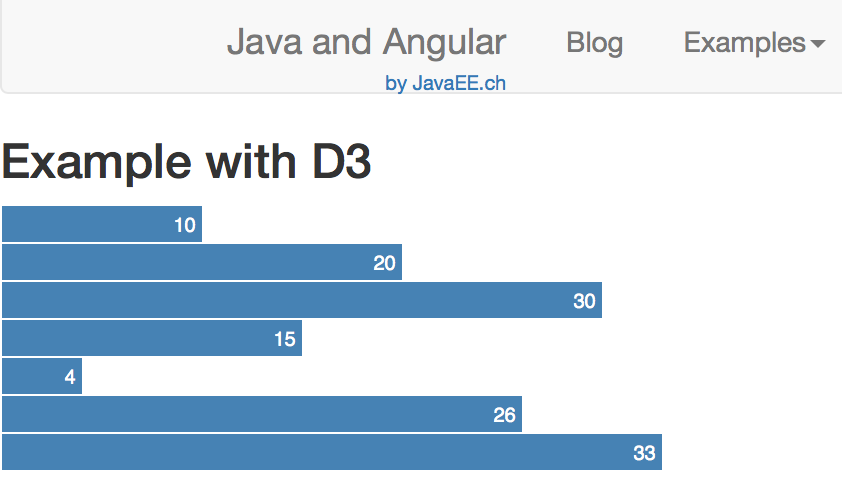Angular and D3.js – tutorial
Updated:
Goal: use the D3.js library in an Angular project.

Here the steps to integrate the library with Angular.
In the package.json we have to declare the dependencies with d3:
"@types/d3": "^4.4.1",
"@types/d3-scale": "^1.0.6",
"d3": "^4.5.0",
"d3-scale": "^1.0.4",
In vendor.ts:
// d3.js
import 'd3/build/d3.min';
import 'd3-scale/build/d3-scale.min';
In the component that will generate the view you have to import the d3 types:
import * as d3 from "d3";
import * as d3scale from "d3-scale";
In the component we declare the style used and we reference the external xml
@Component({
selector: 'd3-example',
templateUrl:'../html/d3.html',
providers: [ConstantsService, Location],
styles:[`.chart div {
font: 10px sans-serif;
background-color: steelblue;
text-align: right;
padding: 3px;
margin: 1px;
color: white;
}`],
encapsulation: ViewEncapsulation
.None
})
The external html simply declare the object that will be modified by the library (chart):
<h3>Example with D3</h3>
<div class="chart"></div>
Your class has to implement AfterViewInit. This method is called after that Angular initialises the component's view and child views.
export class D3Component implements OnInit, AfterViewInit
ngAfterViewInit() {
var data = [10, 20 ,30 ,15, 4, 26, 33];
d3.select(".chart")
.selectAll("div")
.data(data)
.enter().append("div")
.style("width", function(d) { return d*10 + "px"; })
.text(function(d) { return d; });
}
